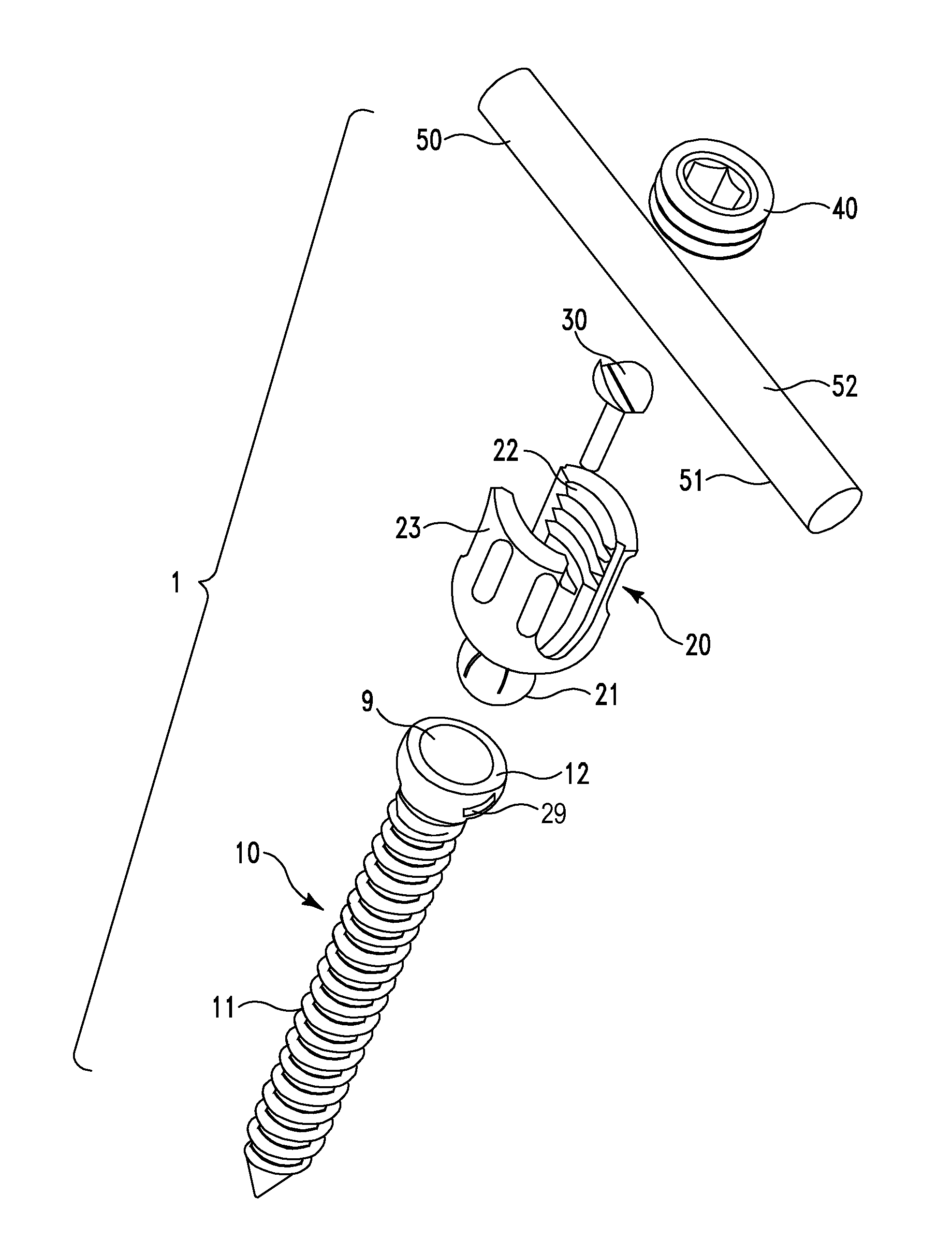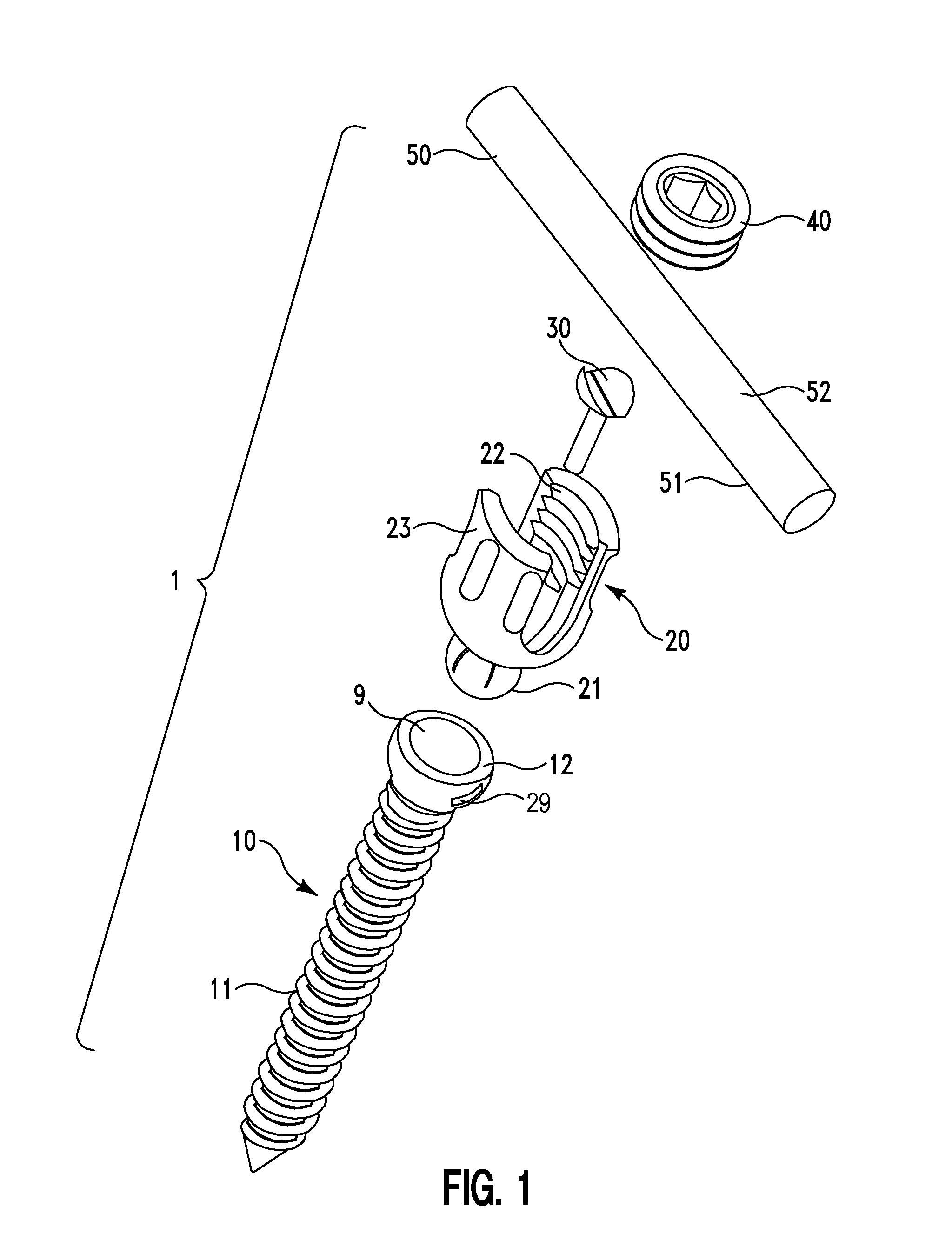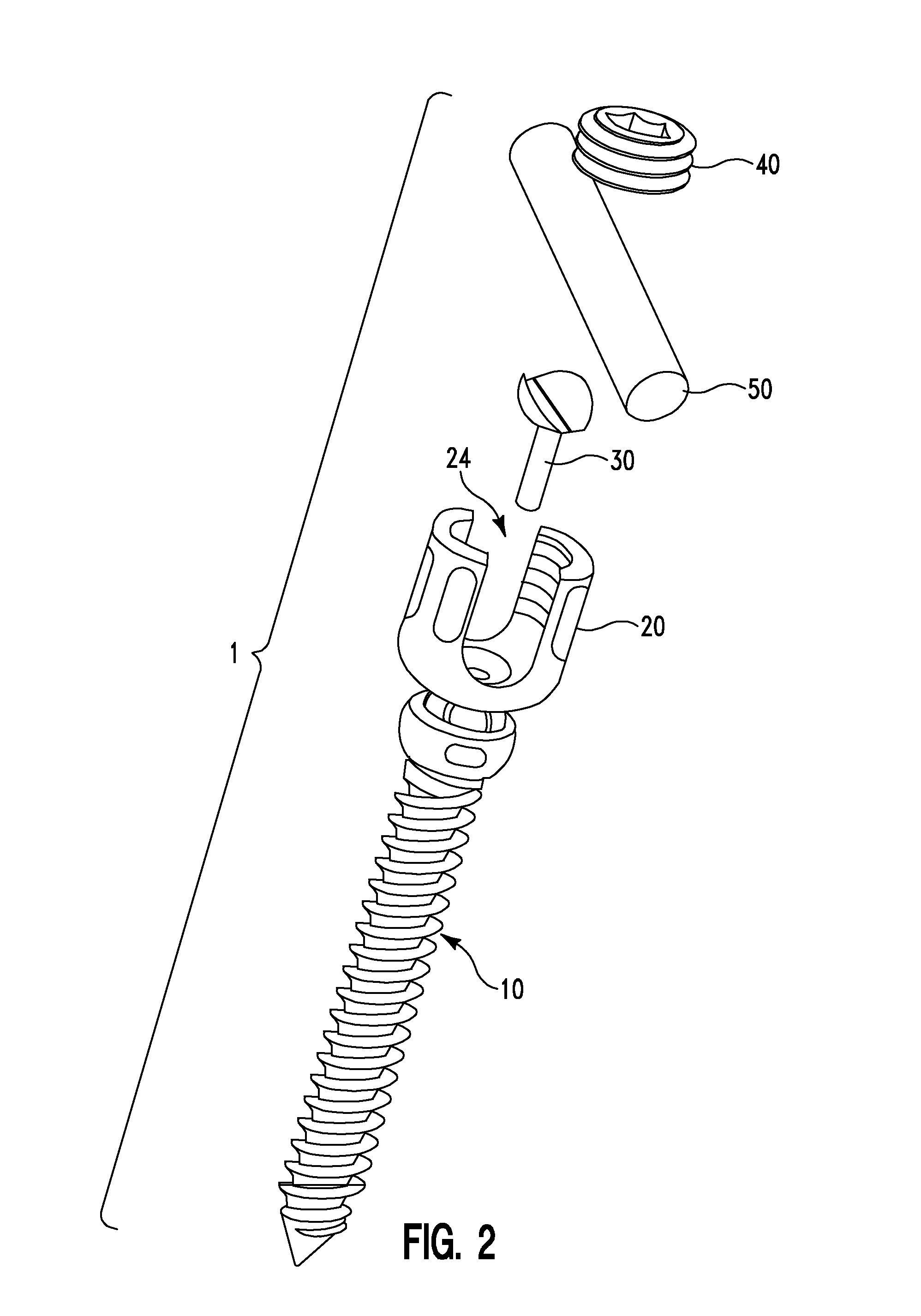Polyaxial pedicle screw assembly
a technology of pedicle screw and screw assembly, which is applied in the direction of ligaments, prostheses, osteosynthesis devices, etc., can solve the problems of reducing fatigue resistance, unable to lock into the desired position of conventional polyaxial systems, and reducing fatigue resistance, so as to achieve more lateral range of motion
- Summary
- Abstract
- Description
- Claims
- Application Information
AI Technical Summary
Benefits of technology
Problems solved by technology
Method used
Image
Examples
first embodiment
[0035]FIGS. 1 through 6 provide an exploded view of the pedicle screw assembly 1 according to the invention. The screw assembly 1 comprises a bone screw (fixator component) 10 having a threaded end 11 for engaging a bone (not shown) and a concave female socket end 12 for engaging and receiving the screw head 20.
[0036]As implemented, the screw head 20 is first snapped into place in the bone screw 10 as shown in FIG. 2. Then, as shown in FIGS. 3 and 9B, the saddle pin 30 snaps into place in the lower base portion 25 of the screw head 20, which includes a groove 26 (best seen in FIG. 7) for receiving the saddle pin 30. In the manufacturing process, once the saddle pin 30 snaps into place, the screw assembly 1 is prepared for ultra sonic cleaning to remove any impurities and subsequently may be shipped in this manufactured format (with the saddle pin 30 connected to the screw head 20, which is connected to the bone screw 10).
[0037]FIG. 7 shows that the female spherical socket 12 of the ...
second embodiment
[0042]FIG. 10A is a perspective view of a bone fixator assembly according to the invention, wherein the bone fixator component is configured as a hook 60. The hook 60 is further illustrated in FIG. 10B. The hook 60 includes a concave socket 12 having an inner portion 9 adapted to receive the bulbous end 21 of the screw head 20; and a dimpled outer portion 8. The hook 60 further includes a pair of arms 61, 62 connected by a connection arm 64. A space 63 separates the arms 61, 62 from one another. The arms 61, 62 are configured to receive an additional member (not shown) for subsequent attachment to the bone.
[0043]The several embodiments of the saddle pin 30 are shown in FIGS. 11A through 14. The saddle pin 30 provides a proper seat for the longitudinal member 50 and avoids notching a typical titanium longitudinal member 50 (titanium is very notch sensitive). Furthermore, the saddle pin 30 allows one to accommodate multiple sizes of longitudinal members 50 in the same screw assembly s...
PUM
 Login to View More
Login to View More Abstract
Description
Claims
Application Information
 Login to View More
Login to View More - R&D
- Intellectual Property
- Life Sciences
- Materials
- Tech Scout
- Unparalleled Data Quality
- Higher Quality Content
- 60% Fewer Hallucinations
Browse by: Latest US Patents, China's latest patents, Technical Efficacy Thesaurus, Application Domain, Technology Topic, Popular Technical Reports.
© 2025 PatSnap. All rights reserved.Legal|Privacy policy|Modern Slavery Act Transparency Statement|Sitemap|About US| Contact US: help@patsnap.com



